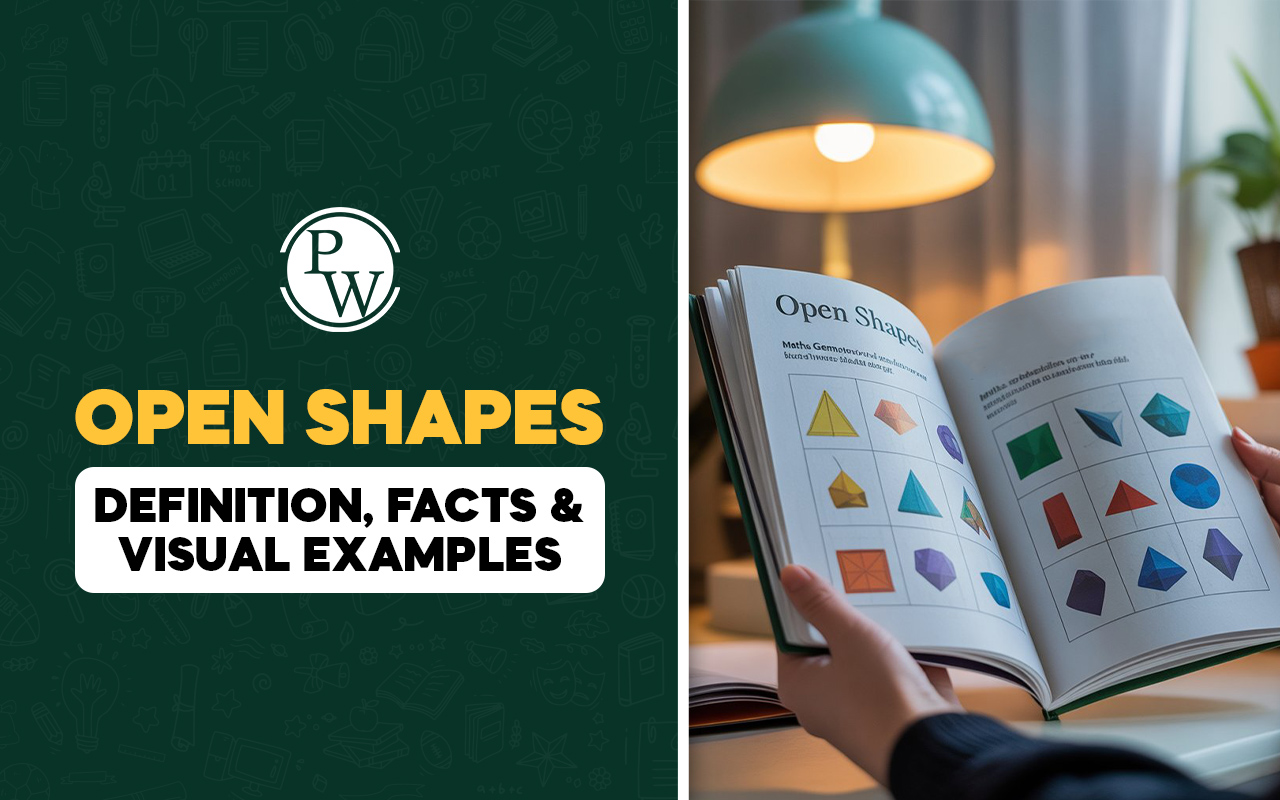
What Are Acids, Bases and Salts?
One of the important topics in this field of chemistry is the study of acids, bases, and salts. We find them around us more often than we realize. When you enjoy the sour taste of lemon juice, feel the soapy nature of washing soda, or see the seasoning of salts in your favourite recipe, you interact with acids, bases, and salts. This blog introduces you to acids, bases, and salts and explains how these special types of compounds behave, interact, and are used in real-life applications.
Read More: Metals and Non-Metals
What is an Acid? Definition, Properties
An acid is a substance that releases hydrogen ions (H⁺) when dissolved in water. These ions determine the acidic properties of the solution. Acids typically taste sour. They can be found in many natural sources and also produced synthetically. Acids are used in various industrial processes.
Types of Acid
Acids can be classified based on their origin, strength, and chemical composition. Here is the overview of the classification:
Based on Strength
-
Strong Acids: These acids produce hydrogen ions (H⁺) in water to the maximum extent. Examples: Hydrochloric acid (HCl), Sulfuric acid (H₂SO₄), Nitric acid (HNO₃)
-
Weak Acids: These acids partially produce H⁺ ions in water. Examples: Acetic acid (CH₃COOH), Citric acid, Carbonic acid (H₂CO₃)
Based on Source
-
Organic Acids: These acids are found in natural sources like fruits, vegetables, etc. and are usually weaker. For example, Lactic acid and acetic acid.
-
Inorganic Acids (Mineral Acids): These are prepared from minerals. Examples: Hydrochloric acid, Sulfuric acid
Based on Basicity
-
Monobasic Acids: These acids release one H⁺ ion per molecule. Example: HCl
-
Dibasic and Tribasic Acids: These acids release two or more H⁺ ions per molecule. Examples: H₂SO₄ (Dibasic), H₃PO₄ (Tribasic)
Based on Concentration
-
Concentrated Acids: They have a high amount of acid in the solution.
-
Dilute Acids: Have a lower concentration of acid in water.
Also Read : Living Things & Non-Living Things
Common Examples of Acids in Daily Life
Acids are present in many natural substances and products used in daily life. Here are some examples:
-
Citric Acid: Found in citrus fruits like oranges and lemons
-
Acetic Acid: The main component of vinegar
-
Ascorbic Acid: Found in tomatoes
-
Tartaric Acid: Found in tamarind
-
Lactic Acid: A component of milk
-
Malic Acid: Found in apples
Properties of Acids
Acids have some special physical and chemical properties, as mentioned below:
-
Most acids have a distinctly sour taste, as you find lemon juice and vinegar.
-
Acids change the colour of certain indicators, such as litmus paper, which turns from blue to red in contact with an acid.
-
Acids are mostly corrosive and can cause damage to living bodies or affect metal and other materials.
-
An acid reacts with a base to form salt and water.
-
Acidic solutions can conduct electricity because they contain ions.
Also read: Structure of Atom
What is a Base? Definition, Properties & Examples
A base is a substance that produces hydroxide ions (OH⁻) when mixed in water. They usually have a bitter taste and a slippery feel. Bases are used in several industrial and domestic applications.
Types of Bases
As mentioned below, acids can be classified based on their origin, strength, and chemical composition:
Based on Strength
-
Strong Bases: These bases produce OH- ions in water to the maximum extent. Examples: Sodium hydroxide (NaOH), Potassium hydroxide (KOH)
-
Weak Bases: These bases produce OH- ions in water partially. Examples: Ammonia (NH₃), Magnesium hydroxide (Mg(OH)₂)
Based on Acidity
-
Monoacidic Base: They produce one OH⁻ ion per molecule. For example, NaOH.
-
Di-acidic and Tri-acidic: These bases produce two or three OH⁻ ions per molecule. For example: Ca(OH)₂, Al(OH)₃
Based on Solubility
-
Alkalis: Water-soluble bases are called alkalis.
Common Bases in Daily Life
Bases are present in many natural substances and products used in daily life. Here are some examples:
-
Sodium Hydroxide: Used in making soap
-
Calcium Hydroxide: Used in lime water and whitewashing
-
Magnesium Hydroxide: Used as an antacid medicine
-
Ammonium Hydroxide: Used in cleaning products
Properties of Bases
Acids have some special physical and chemical properties, as mentioned below:
-
Most bases taste bitter and feel soapy as you touch them.
-
Bases change the colour of certain indicators, such as litmus paper, which turns red to blue in contact with a base.
-
Strong bases are corrosive and can cause damage to living bodies.
-
Bases react with acid to form salt and water.
-
Solutions of bases can conduct electricity because they contain ions.
What is a Salt? Salt Definition, Uses & Examples
A salt is a chemical compound formed when an acid reacts with a base. This reaction is called a neutralization reaction. It is formed by combining the positive metal ion (from the base) and the negative non-metal ion (from the acid). The hydrogen ions from acid and hydroxyl ions from bases combine to produce water molecules.
So, we can express the basic equation for a neutralization reaction as follows:
Salt = Acid + Base → Salt + Water
Example:
HCl (acid) + NaOH (base) → NaCl (salt) + H₂O (water)
Types of Salts
Salts are generally neutral, but some can be acidic or basic depending on the nature of the acids and bases from which they are formed. Salts can be classified into the following types depending on their behaviour:
Normal Salts
These salts are neutral because the negative ions of the base completely neutralize the positive ions in an acid. Example: Sodium chloride (NaCl), Potassium nitrate (KNO₃)
Acidic Salts
These salts are formed when a strong acid reacts with a weak base. They contain some replaceable H⁺ ions. Examples are ammonium chloride (NH₄Cl).
Basic Salts
These salts are formed through the reaction of a strong base and weak acid. It contains some OH⁻ ions—for example, sodium carbonate (Na₂CO₃).
Double Salts (Amphoteric)
These salts show both acidic and basic properties. They can react with both acids and bases. Examples: zinc oxide (ZnO) and aluminium oxide (Al2O3).
Properties of Salts
Acids have some special physical and chemical properties, as mentioned below:
-
Generally, salts are crystalline.
-
Most of the salts are soluble in water.
-
The salts can be salty, sour, sweet, bitter, or savoury.
-
Neutral salts are generally odorless.
-
Salts contain ions, so they are conductors of electricity.
Practical Uses of Acids, Bases, and Salts
In real life, acids, bases, and salts are used for various purposes due to their specific properties. Here are some examples:
Uses of Acids:
-
Sulfuric Acid: Used in car batteries
-
Hydrochloric Acid: Used in cleaning and digestion
-
Nitric Acid: Used in making explosives and dyes
Uses of Bases:
-
Sodium Hydroxide: Used in soap and detergent industry
-
Ammonium Hydroxide: Used in cleaning solutions
-
Magnesium Hydroxide: Used as a medicine for indigestion
Uses of Salts:
-
Sodium Chloride (Table Salt): Essential component of food for taste
-
Sodium Bicarbonate (Baking Soda): Used in food preparations
-
Silver Nitrate: Used in medical applications
-
Calcium Oxychloride (Bleaching powder): Used in textile and paper industry
Acid and Base Indicators
Indicators are substances that change colour when they come in contact with an acid and base. So, we can identify a solution's acidity, basic, or neutral nature using indicators.
Some common indicators and their characteristics are mentioned below:
|
Acid and Base Indicators |
|||
|
Indicator |
Colour in acidic solution |
Colour in basic solution |
Colour in neutral solution |
|
Litmus |
Red |
Blue |
No change |
|
Phenolphthalein |
Colourless |
Pink |
Colourless |
|
Methyl Orange |
Red |
Yellow |
Orange |
The pH Scale
The pH scale is the value range that indicates the extent of a solution's acidic or basic nature. The values range from 0 to 14 depending on the concentration of hydrogen ions in a solution.
The values indicate the acidity or alkalinity as follows:
-
pH < 7: Acidic
-
pH = 7: Neutral
-
pH > 7: Basic
Understanding acids, bases, and salts and their properties is useful in academic learning and everyday practical life. From fruits and vegetables to food preparation and cleaning products, different acids, bases, and salts have become a part of daily life and industrial applications.
Make Science Learning Interesting and Exciting with CuriousJr Live Classes
Many young learners feel science is complex and confusing as they fail to understand concepts and lack interest. Curious Junior kids online classes handle these challenges effectively by creating an engaging and interactive learning environment for students.
What's Special about Curious Junior Science Classes?
-
6-day live sessions are structured with interactive discussions to make learning easy and enjoyable.
-
Students benefit from a dual mentorship system that guides them through new topics and clarifies doubts in real-time.
-
We follow a concept-based learning approach by connecting science to everyday experiences.
-
Regular assessments and feedback help students stay on track and motivate them to improve their performance.
-
Expert mentors tailor their lesson plans to suit each student's specific needs and abilities.
At Curious Junior, we make science lessons more interesting and informative, which encourages curiosity, builds confidence, and develops a passion for science. Book a demo class today and let your child engage with more focus and enthusiasm with the science topics.
Do you need help with your homework or preparing for exams?
Study without using the internet
Acids, Bases, and Salts FAQs
Are Base and Alkali the same?
Which acid helps in digestion?
What is the function of antacid medicine?
What is the process of diluting an acid?









